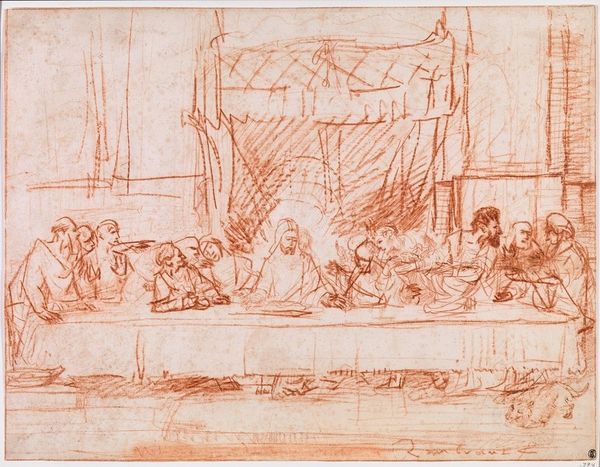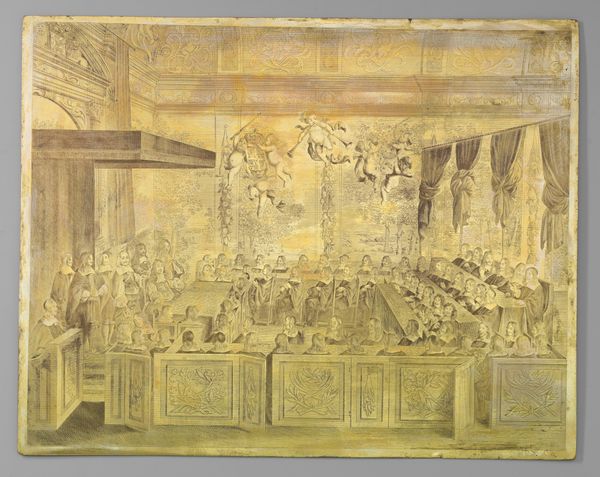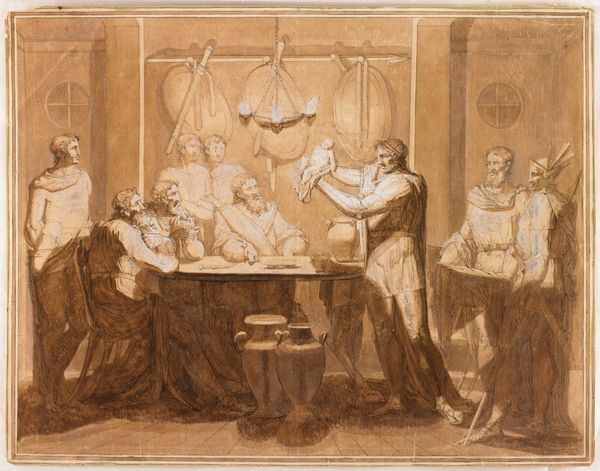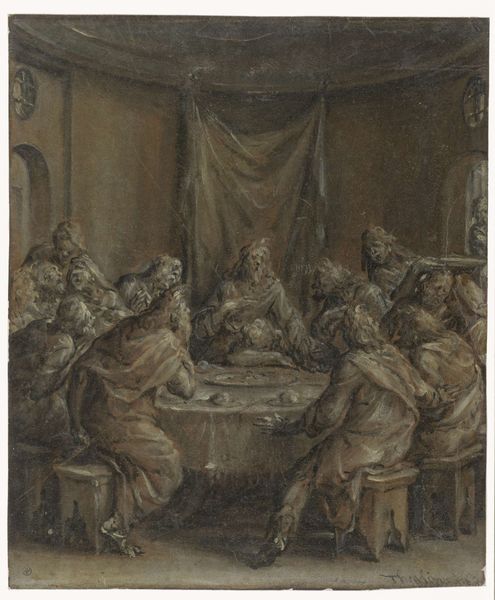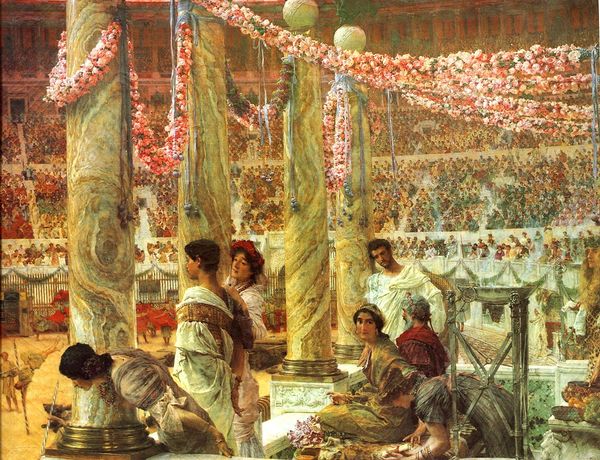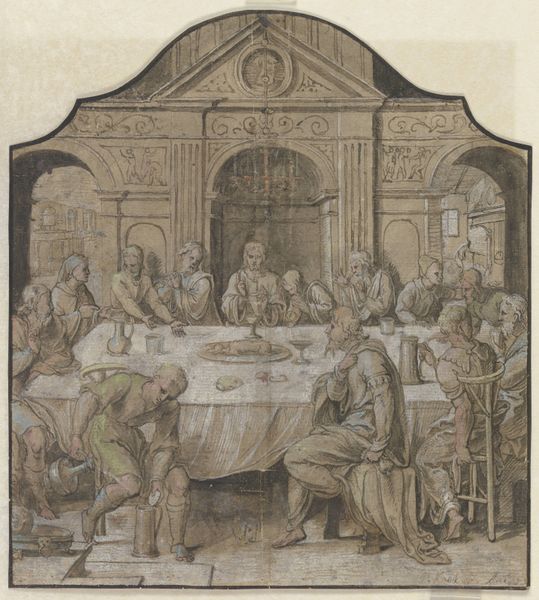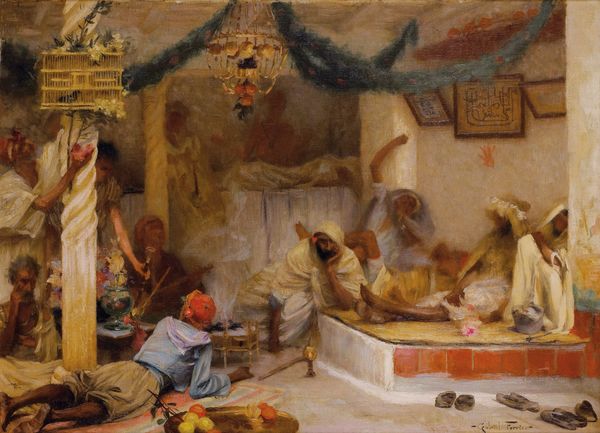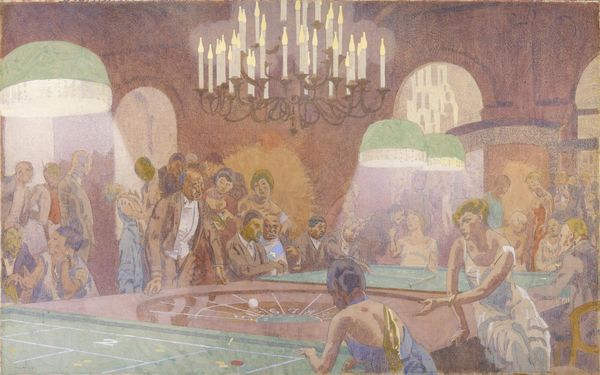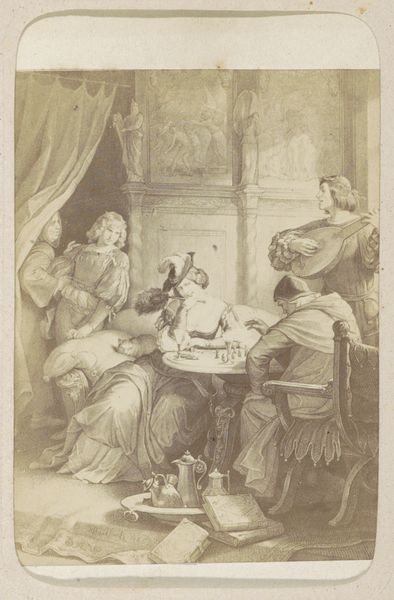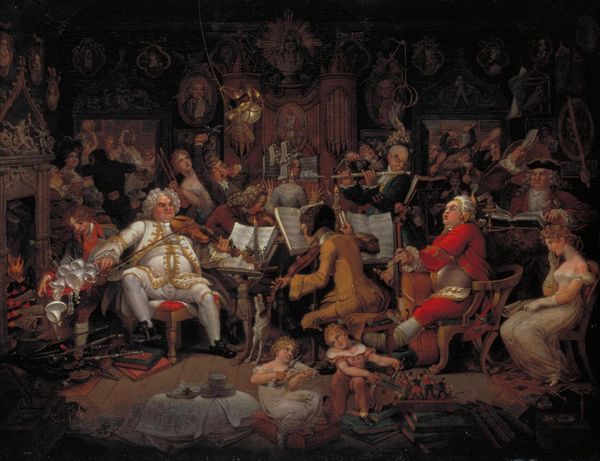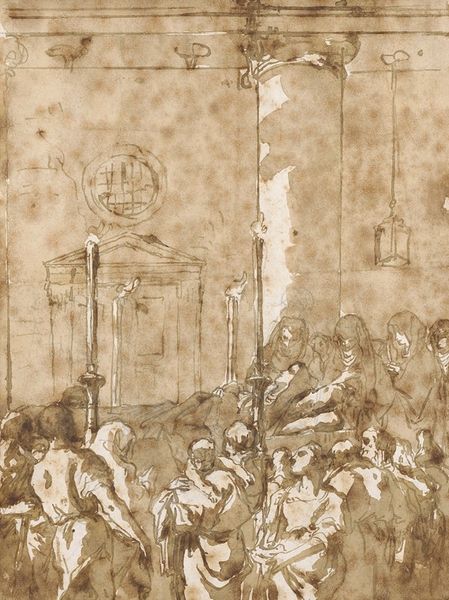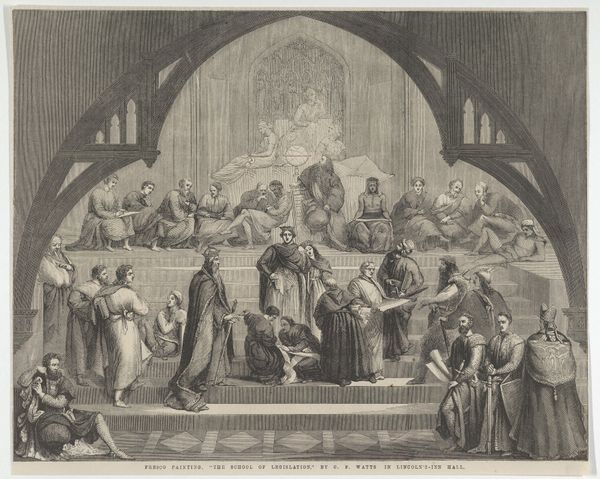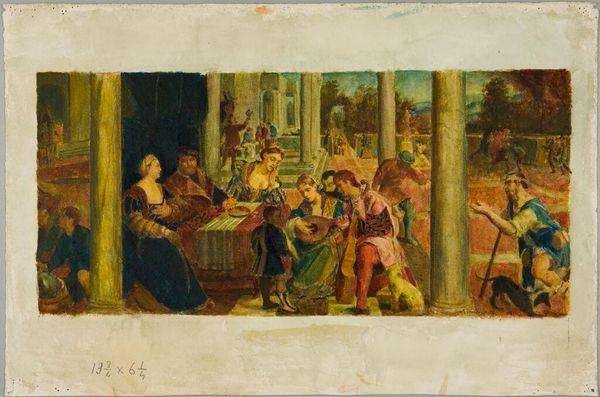
drawing, painting, watercolor
#
portrait
#
drawing
#
medieval
#
narrative-art
#
painting
#
figuration
#
handmade artwork painting
#
watercolor
#
jesus-christ
#
christianity
#
watercolour illustration
#
history-painting
#
watercolor
#
christ
Copyright: Public domain
Curator: I’m immediately drawn to the emotional weight conveyed by this watercolor and ink depiction. The subdued palette of sepia tones, applied with such fluidity, seems to underscore a feeling of foreboding. Editor: That's a very sensitive reaction to a seminal work. What we're looking at is a watercolor and ink portrayal of "The Last Supper" rendered by Alexander Ivanov in 1824. This artwork embodies the historical and socio-cultural milieu of early 19th-century artistic engagement with religious themes, especially the exploration of Christ as a socio-political figure in a time of immense ideological transition. Curator: It feels steeped in both Christian artistic traditions and Ivanov's unique symbolism, specifically in his decision to create this piece in such a soft color, like he wants to depict a memory or perhaps an untouchable piece of history. What can you tell me about that compositional element? Editor: Considering the artistic period, Ivanov, influenced perhaps by thinkers like Hegel, was likely reflecting on the dialectical tensions between tradition and emerging social ideals. His positioning of Jesus at the center, as a nexus for contrasting reactions, embodies his reading of Christ as a catalyst within larger historical currents. Also, the use of watercolor, as opposed to the more grand scale oil paintings often used for such scenes, also plays a significant role in portraying Christ as gentle, yet impactful. Curator: The subdued watercolor technique heightens the psychological depth, rendering the narrative almost dreamlike, filled with allegories related to human fragility. The absence of rigid lines softens the divine image while adding emotion and the overall feel. It's almost as if he's inviting the viewer to introspectively engage with each disciple, acknowledging their hopes, flaws, and ultimate roles in the unfolding of history. Editor: Absolutely. Each person becomes representative of a facet of belief, commitment, doubt and betrayal. That’s what stays with me. It isn't only about retelling a canonical story but diving into the social complexities, and individual and collective experiences that history-changing moments carry with them. It makes one wonder, what will society look like as time passes on, who will be a Judas? Curator: Thank you. Reflecting on the composition, materials, and cultural context, I am deeply intrigued by its interpretation.
Comments
No comments
Be the first to comment and join the conversation on the ultimate creative platform.

